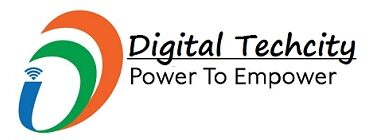Augmented analytics is revolutionizing business intelligence and enabling organizations to extract deeper insights from data. By automatically generating visualizations, discovering key drivers and patterns, and enhancing human analysis with machine learning, augmented analytics tools take analytics to the next level. As the adoption of augmented analytics grows, many technology vendors now provide these capabilities. Choosing the right business analytics tool can be challenging.
Here are tips for selecting the best augmented analytics tools for your needs.
Assess your organizational maturity.
The maturity of your organization’s existing business analytics capabilities should guide your augmented analytics tool selection. Are you early in the adoption journey or already have advanced analytics? Do you need basic self-service visualization or AI-driven insight recommendations? Evaluate your current analytics skill level and usage and choose a solution to augment capabilities, not completely replace them. Prioritize must-have functionality for your use case over “nice-to-have” features to avoid overspending.
Understand the Platform Architecture
Augmented analytics solutions use different technical architectures, which impact capabilities and the total cost of ownership. Some tools are proprietary end-to-end platforms, while others layer augmented functionality onto third-party business intelligence platforms. Review how tightly integrated the augmented features are versus bolted-on. Assess the needs for data preparation, governance, scalability, and flexibility to select the right underlying platform. Cloud-native software-as-a service options can provide speed and lower maintenance needs.
Review the analytics enhancements offered.
The core value of augmented analytics is the enhancements provided to traditional manual analysis. Compare how vendors augment analytics across the workflow. Look for robust auto-visualization generation, insight recommendation engines, conversational querying, advanced prediction, smart data preparation, and natural language generation for text explanations. Ensure capabilities go beyond basic automation to true intelligence augmentation. Prioritize enhancements that suit your use-case needs.
Evaluate machine learning capabilities.
Sophisticated machine learning is key to unlocking the full potential of augmented analytics. Examine each vendor’s specific machine-learning capabilities and how they are embedded throughout the platform. Look for versatile, enterprise-ready options like deep learning, neural networks, autoML, reinforcement learning, and transformers. Verify broad language coverage for NLP. Seek machine learning models that are pre-built for your industry as well as customizable when needed.
Assess Ease of Use
A key goal of augmented analytics is to increase accessibility and adoption by business users of all skill levels. Assess the overall ease of use, analyzing both the experience and the assistance provided. Look for intuitive modern interfaces, conversational language options, automated insights surfaced visually, and embedded analytics content within workflows. Seek smart guidance, alerts if insights are missed, and explanations of model logic and recommendations. Minimizing the need for coding is ideal.
Review Data Connectivity and Preparation
The analytics are only as good as the data behind them, so evaluate each tool’s data connectivity and preparation. Look for versatility in the data sources supported, both on-premises and cloud-based. Seek smart ETL with automated data profiling, cataloging, quality checks, and enrichment. Confirm cross-database joins, hierarchy, and relationship mapping are handled intelligently. Data governance, security, and privacy controls should also be assessed.
Analyze insight and explainability.
It’s critical to validate the logic behind augmented analytics-generated models, visuals, and recommendations. Examine each tool’s model explainability and reasoning transparency features. Look for statistical details like precision, recall, and accuracy metrics. Seek an intuitive visual depiction of model factors and weighting. NLQ generation adds explainability directly within automated text. Review the clarity of alerts when anomalies are detected or predictions are made.
Evaluate Scalability
As data and analytics usage grows over time, performance and scalability become crucial. Test augmented analytics platforms with large, complex datasets and high numbers of concurrent users. Confirm speed and stability at scale across the workflow, from data processing to analytics to deployment. Seek cloud-native software optimized for elasticity as needs fluctuate. Analyze architecture support for distributed processing and query acceleration.
Review operationalization options.
To maximize business impact, analytics insights must be operationalized across the organization. Examine options to embed, share, and export analytics seamlessly. Seek APIs, SDKs, widgets, and templates to incorporate into custom apps and workflows. Look for dynamic dashboard web publishing, portal integration, and mobile app support. Alert notifications, workflow triggers, and comment tracking add context. Compare accessibility controls and user management options.
Assess the Ongoing Platform Evolution
Augmented analytics leverages AI, which means ongoing model refinement is required by vendors as techniques and data evolve. Review the provider’s technology vision, training data advantage, and roadmap velocity. Confirm regular updates to improve algorithms, enhance ease of use, and add features. Seek customer-driven advancement balanced with innovation. For cloud solutions, verify capabilities remain cutting-edge with no extra effort by customers.
Training and support options
Assess the training and ongoing support provided by vendors to ensure users can maximize value from the augmented analytics capabilities. Look for in-product guided tours, tips, and documentation. Seek the availability of live chat, phone, email, and community forums for assistance. Review options for instructor-led training and certifications. Confirm vendors provide enablement resources, including case guides, templates, and best practices.
Total Cost of Ownership
Evaluate both the initial licensing costs and ongoing fees of augmented analytics solutions. For cloud platforms, consider data storage and user pricing models. Factor in needs for IT infrastructure, administration, and maintenance. Compare the costs of proprietary end-to-end platforms versus add-on tools. Seek clear pricing with no hidden fees. Confirm costs align with the value gained for your specific use cases. Prioritize ROI when budgeting for augmented intelligence augmentation.
Conclusion
Selecting the right augmented analytics platform is essential to maximizing business value. Following an evaluation process focused on key functionality, underlying architecture, machine learning sophistication, usability, scalability, and operationalization can help identify the best fit. Augmented analytics is a fast-moving space, so partnering with an innovative vendor that keeps pace with AI advances ensures you can harness the full power of this technology now and in the future. The payoff of enhanced insights and analytics adoption from leveraging the right augmented analytics tools usa makes the selection process time-efficient. Be sure to verify the vendor provides a robust roadmap showing continued advancement of augmented capabilities through ongoing AI model improvement, training data expansion, and new feature additions.

